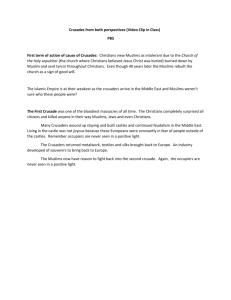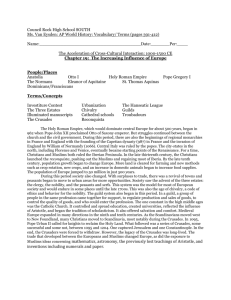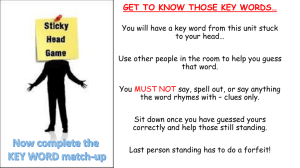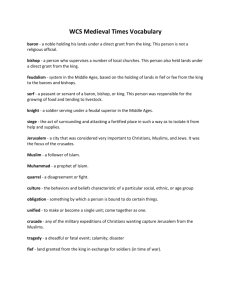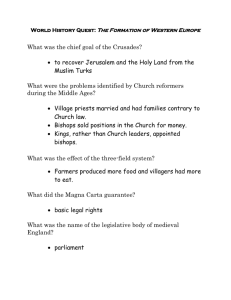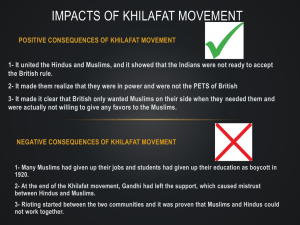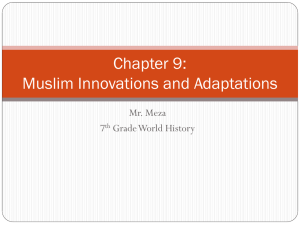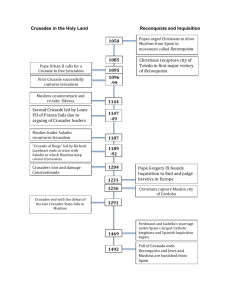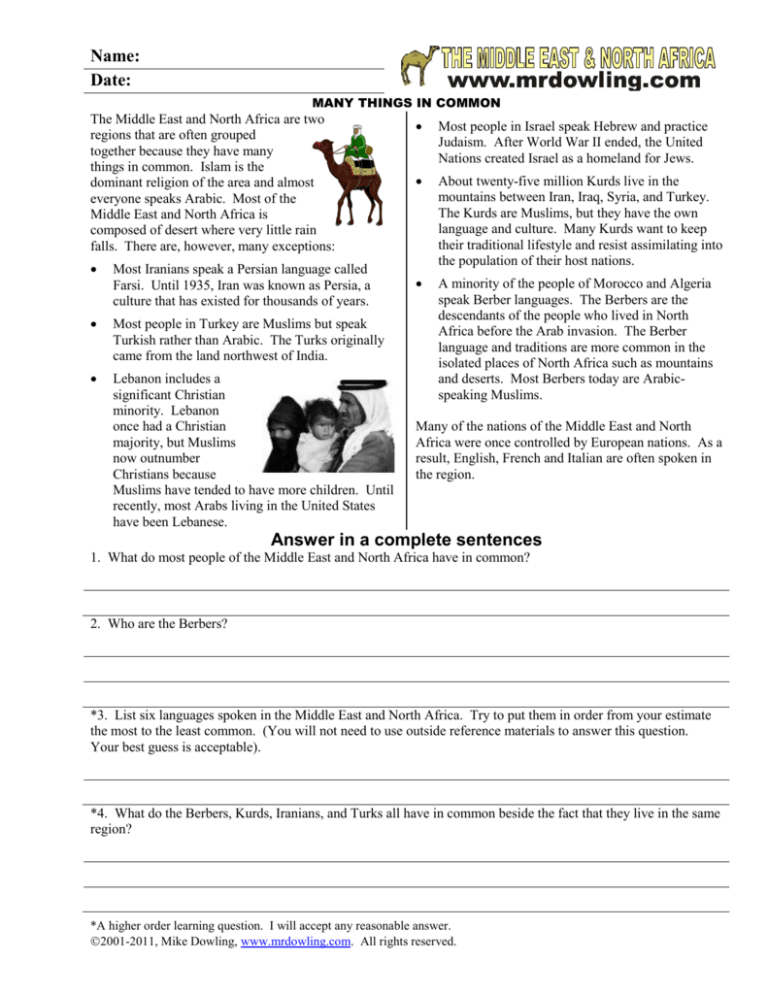
Name:
Date:
MANY THINGS IN COMMON
The Middle East and North Africa are two
regions that are often grouped
together because they have many
things in common. Islam is the
dominant religion of the area and almost
everyone speaks Arabic. Most of the
Middle East and North Africa is
composed of desert where very little rain
falls. There are, however, many exceptions:
Most Iranians speak a Persian language called
Farsi. Until 1935, Iran was known as Persia, a
culture that has existed for thousands of years.
Most people in Turkey are Muslims but speak
Turkish rather than Arabic. The Turks originally
came from the land northwest of India.
Lebanon includes a
significant Christian
minority. Lebanon
once had a Christian
majority, but Muslims
now outnumber
Christians because
Muslims have tended to have more children. Until
recently, most Arabs living in the United States
have been Lebanese.
Most people in Israel speak Hebrew and practice
Judaism. After World War II ended, the United
Nations created Israel as a homeland for Jews.
About twenty-five million Kurds live in the
mountains between Iran, Iraq, Syria, and Turkey.
The Kurds are Muslims, but they have the own
language and culture. Many Kurds want to keep
their traditional lifestyle and resist assimilating into
the population of their host nations.
A minority of the people of Morocco and Algeria
speak Berber languages. The Berbers are the
descendants of the people who lived in North
Africa before the Arab invasion. The Berber
language and traditions are more common in the
isolated places of North Africa such as mountains
and deserts. Most Berbers today are Arabicspeaking Muslims.
Many of the nations of the Middle East and North
Africa were once controlled by European nations. As a
result, English, French and Italian are often spoken in
the region.
Answer in a complete sentences
1. What do most people of the Middle East and North Africa have in common?
2. Who are the Berbers?
*3. List six languages spoken in the Middle East and North Africa. Try to put them in order from your estimate
the most to the least common. (You will not need to use outside reference materials to answer this question.
Your best guess is acceptable).
*4. What do the Berbers, Kurds, Iranians, and Turks all have in common beside the fact that they live in the same
region?
*A higher order learning question. I will accept any reasonable answer.
2001-2011, Mike Dowling, www.mrdowling.com. All rights reserved.
Name:
Date:
Fill in the Blanks
The Middle E______ and N________ Africa are often grouped together because the two regions, while
spread across two *c__________________, have many things in c__________. Most of the people of the region
are *M____________ who speak A__________, and most of the land in the region is very *d____.
There are some exceptions to this generalization, and those exceptions have led to many conflicts in the
region. The people of Iran practice *I________, but most Iranians are the descendants of the Persians, a
c____________ that has existed in the region for thousands of years. Many Iranians speak *A__________
because Arabic is the l____________ of the Q________, but in everyday life, most Iranians speak F________.
The Turks originally came from the land northwest of I________. The Turks controlled almost all of the Middle
East until World War I. Today people in the modern nation of Turkey generally speak T____________. The
K________ live in the m______________ between I______, Iraq, S________, and T__________. The Kurds
have tried to keep their traditional *c__lt__r__, but particularly in T__________ and I______, governments have
attempted to a____________________ the K________ into the *l______l populations. The B____________
lived in N________ Africa before the A______ invasion. Unlike the K________, they slowly began to
a__________ and lose their traditional c____________. Almost all of the Berbers practice *I_______. The
Berber language is still spoken is isolated regions of M____r____c__ and other North A__________ nations.
Not all Muslims are A________, and not all Arabs are M____________. Lebanon had been home to
Arab C__r__s__i__ns for many years. Today more than one-t________ of the Lebanese people are Christians,
but M____________ now outnumber the Christians because Muslims have had a higher *b________ rate than
Christians for several *g__n__r__t____ns.
Many J__________ people returned to their traditional homeland on the eastern shore of the
Mediterranean Sea when the United Nations created the modern nation of I__________ in 1948. H__________ is
I__________’s national language, but *A__________, English, and other language are also common in Israel.
Most of the Middle East and North Africa was once controlled by outside powers, so other languages are still
spoken. English, F________, and I__________ are languages that are often heard *h______ in the region.
Answer in a complete sentences
*5. Most of the people of the Middle East and North Africa are Muslims who speak Arabic. Write a paragraph
that describes some exceptions to this generalization. Your paragraph must include a topic sentence, at least four
support sentences, and a conclusion that restates, but does not repeat the topic sentence.
*A higher order learning question. I will accept any reasonable answer.
2001-2011, Mike Dowling, www.mrdowling.com. All rights reserved.

